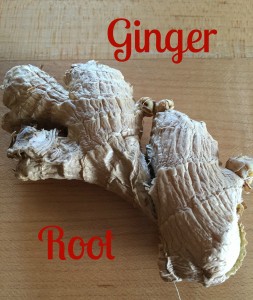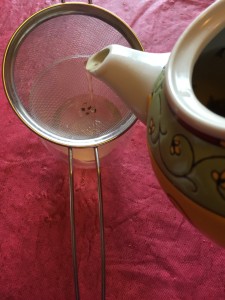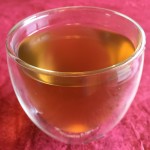Cozy Ginger for Winter Wellness
Warm, spicy, exotic. Three words that come to mind when I think of a favorite herb and oil of mine: ginger, or Zingiber officinale by its nomenclature. A perfect choice for winter wellness, ginger has a rich history as a medicinal, healing botanical.

I first became familiar with it years ago when I was juicing and would add a thumb-size piece of the root to my current juicing recipe. You can’t miss its spicy flavor and aroma. Ginger tisane (tea) became my go-to favorite, and it’s especially comforting in the fall and winter. If I feel the chills or flu symptoms setting in, it is the first thing I reach for to help me fight off any nasty bug. It’s also know for being soothing to the stomach.
Besides all of these properties, when it’s used topically, ginger is a pain reliever. Last year I developed a blend for my weight-lifting son to use, and ginger is one of the main ingredients in it to help increase circulation and relieve aches, pains, and strains.
Let’s explore a bit of the science behind this herb.
Therapeutic Actions of Ginger
While there are several others, here are the main therapeutic actions of ginger.
- Analgesic (pain relieving)
- Anti-emetic (reduces nausea and vomiting)
- Antispasmodic
- Aphrodisiac
- Carminative (soothes and settles the gut wall, relieves gas)
- Digestive
- Stomachic (tone and stimulate the action of the stomach)
Core Applications
While this list is not comprehensive, I’ve highlighted a few of the main systems of the body that ginger can affect.
- Digestive System. Historically ginger is know to help ease and prevent nausea, vomiting, , gas, stomachaches, and loss of appetite.
- Musculoskeletal System. When added to a cream or oil blend, ginger can help relieve muscular aches and pains from arthritis, sprains, rheumatism, joint pain, and stiffness.
- Respiratory System. Historically, ginger is indicated for colds, fevers, sore throats, sinusitis, bronchitis, congestion, and catarrh (excessive mucus in the nose or throat).
- Reproductive/Endocrine System. May be helpful for reduced sex drive, menstrual cramps and pain, amenorrhea, and dysmenorrhea.
Two Ways to Use Ginger for Winter Wellness
Whether you’re using the essential oil or the actual root, ginger is a delightful botanical to try. Here are two of my favorite ways to use it:
Ginger Tea

Directions
- Thinly slice or chop about one inch of fresh ginger root .
- Add to a Fresh press or put the ginger into an infuser and set in your teacup. Add 8 ounces of just-off-the-boil water.
- Steep for 10 minutes.
- Strain and drink.

Variation: To add a lovely note of lemon plus get all the health benefits, add dried or fresh lemon balm or lemon verbena leaves. It also complements ginger nicely, as it is known to help digestive and respiratory complaints too. Honey and fresh lemon juice are two other wonderful additions if you want a sweeter version with additional lemon flavor. Add these directly before drinking.
Ginger Salt Glow
With it’s warming qualities, ginger makes a lovely salt scrub, especially for the winter months. You can also sub sugar for the salt. I like to use brown sugar.
- 1 cup fine-grain sea salt
- ¼ cup vegetable oil (for example: almond, apricot, or sunflower)
- 12 drops Ginger Essential Oil
Directions:
- Pour salt into a bowl and add the vegetable oil. Stir well.
- Add the essential oils. Stir until evenly dispersed. Add more oil to adjust to your liking.
- Store in a glass or PET plastic container.
To Use: Apply 2-3 times per week. Wet skin. Rub salt mixture in a continuous motion over body, avoiding cuts and the face, as salt is too rough for this delicate skin. Rinse off. Follow with a body lotion, cream, or oil.
Once you’ve experienced this exotic herb, you’ll want to find more ways to use it.
What’s your favorite way to use ginger for winter wellness? Be sure to share in the comments below!
Cautions:
The information here is provided for adults, not children. Pregnant women should also consult their doctors before using any essential oils. According to the Gale Health and Wellness, “dosages over 6 g could cause gastric problems and possibly ulcers. Ginger may slow down blood clotting time. Before taking ginger, consumers should check dosages with a healthcare provider. Additionally, consumers should not ingest the whole ginger plant; it has been found to damage the liver in animals. Ginger root is not recommended for people with gallstones.”

Resources:
